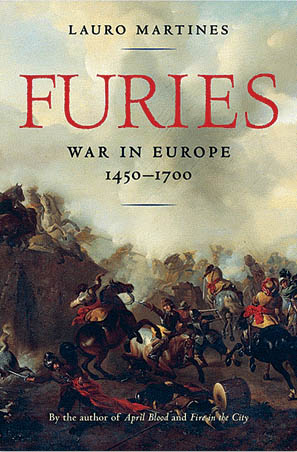
THE MILITARY HISTORY OF EARLY MODERN EUROPE doesn’t get much respect. And that seems strange at first. This period—defined roughly as stretching from the Renaissance to the French Revolution—was an exceptionally violent age, even compared with the conflict-ridden 20th century. War was the natural state of affairs in Europe from the 15th through the 18th centuries. It could be said that the European nation-state, itself a product of the age, existed and grew largely for the purpose of making war.
Some of the most prolific military historians—Geoffrey Parker comes immediately to mind—have written at length on the “military revolution,” the profound change wrought in Western warfare and politics after the introduction of gunpowder weapons in the late Middle Ages. And yet students of war are far more likely to be drawn to the 19th and 20th centuries, to the Napoleonic wars, the American Civil War, and the two World Wars than to the time before the era of Bonaparte. To many, early modern Europe’s history is a chaotic collection of small, dark, and savage wars fought for obscure reasons, mostly over religious and dynastic disputes.
Hence Lauro Martines’s new book is a godsend. In it, Martines, a renowned historian of Renaissance Italy, shows us a great deal about the nature of war in the bloody 16th and 17th centuries. It is not a comprehensive overview, nor a detailed study of technology and tactics, nor a catalog of great campaigns. It is far more valuable. Eschewing a chronological narrative, Martines presents us with the nuts and bolts of wars of the time. Chapters consider the nature and origins of the soldiery, the role of religion as a motivating force, and the conduct of sieges. Martines pays equal attention to the connection between war and society: the changing role of government in the management of organized violence, the touchy and often murderous relationship between soldiers and civilians in war and peace.
The author even takes on—in an admirably succinct chapter—the great paradox of early modern warfare: how the evolving but primitive bureaucratic states of the time, though perpetually on the cusp of fiscal collapse, somehow supported armies in the field as wars grew longer and more expensive.
Drawing chiefly on published secondary works—the book is a masterpiece of synthesis—Martines highlights the wanton, overt, indiscriminate brutality of early modern warfare, the very things that make early modern warfare seem so alien, so other, to more recent conflicts. The book’s utility is hardly limited to the history of war, for Martines reveals the pervasive violence in pre-industrial society. The chapters on siege warfare, plunder, and the hatred between peasants and soldiers make for unsettling and gruesome reading and remind us that many of the horrors we associate with modern warfare have deep historical roots.
The only fault I can find with Furies is its episodic nature. Martines jumps from one conflict to another, using illustrative examples from the Habsburg-Valois wars, the French Wars of Religion, the Dutch Revolt, the Thirty Years’ War, the wars of Louis XIV in seemingly random order. To a reader unfamiliar with the intricacies of politics and diplomacy of the day or the landscape of Italy and the Holy Roman Empire, such leaps could be disorienting.
This is but a minor problem, and probably unavoidable considering the geographical breadth of Martines’s scholarship. In a reasonably short work, made a pleasure to read by the author’s nimble and darkly humorous prose, he has given us an unforgettable glimpse into a violent—and rarely seen—age.
Paul D. Lockhart, a regular contributor to MHQ, is a professor of history at Wright State University





